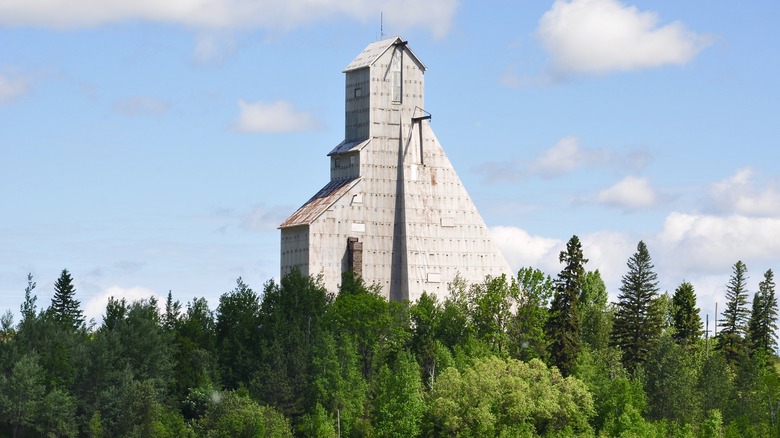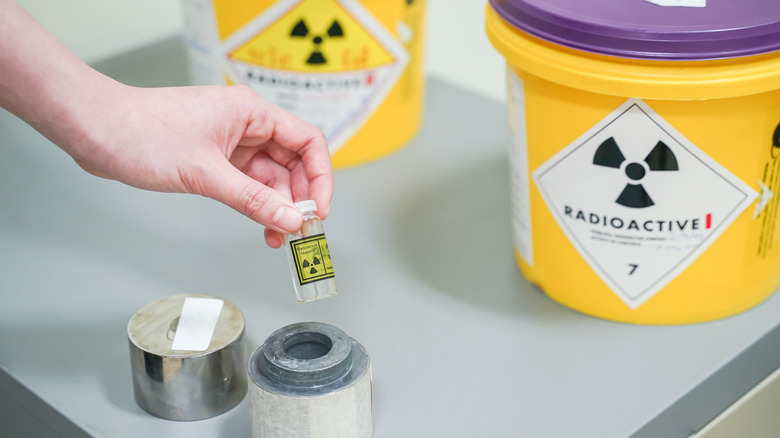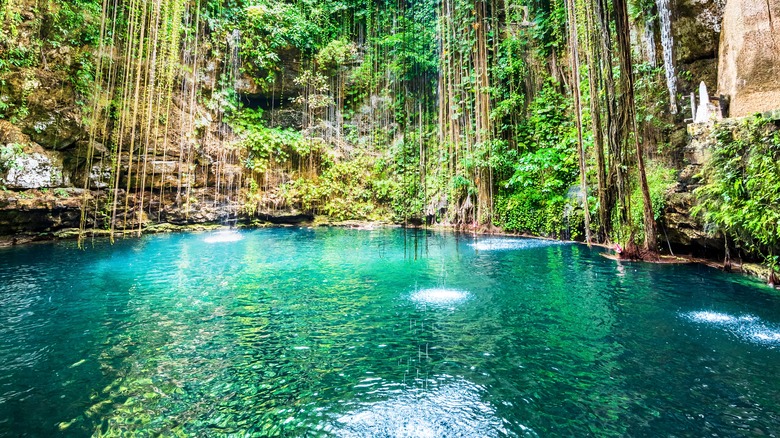The 1.5 Billion Year Old Discovery That Sat Deep In A Canadian Mine
Back in 2013, something groundbreaking was discovered by researchers. Approximately 1.5 miles beneath the surface in Timmins, Ontario, Canada at the Kidd Mine, rocks containing trapped water were recovered and analyzed. As National Geographic explains, this wasn't any ordinary water, however, as it was soon discovered that it was over a billion years old. That's a fairly long time for water to be trapped somewhere, which means it might contain some sort of geological or biological record of Earth from eons ago. The study of ancient, unearthed microbial communities is a fascinating one, as it helps paint a picture of how life developed and lived on the planet before humans existed. But even bigger than that is that it could actually tell scientists if life on other planets is possible.
Flash forward to 2022 and researchers have actually found even older water. As the BBC reports, researchers at the same mine were able to find even older water. How much older? According to estimates, it is around 500 million years older. But how was this discovery even made? What does it say for the future of science? And what could it potentially reveal about the Earth and other planets like Mars?
How the world's oldest water was found
Determining the age of water depends on a few scientific methods, which had to be developed over time. As the Los Angeles Times explains, the researchers behind the oldest water basically measured noble gas isotopes captured within the substance. Here is a quick science lesson for those who may not have attended chemistry class. As Britannica states, an isotope is essentially when two or more atoms have the same element and atomic number, which is essentially the amount of protons that an atom has in its nucleus, thus determining its periodic table position (per a separate Britannica entry). Isotopes will generally have extremely similar chemical behavior, though can differ in physical properties and in their atomic mass.
This was a big reason why researchers were able to measure the age of the water. As National Geographic reports, noble gases ( which are gases with low reactivity and lots of stability) allowed scientists to investigate the number of years that the water was underground. From this noble gas analysis, researchers were able to conclude that little mixing occurred between the surface and the trapped water.
Ancient water tastes horrible
Many questions come to mind when one thinks about the world's oldest water. For example, what kind of bacteria or other forms of life might be present in the water. As The Indian Express states, chemolithotrophic microbes have been found in incredibly ancient water deposits, like those found in Kidd Mine. This raises significant questions about whether life can survive even the most extreme of conditions, like those on Mars. These discoveries are crucial to the scientific understand of life in the extreme and just might help scientists learn more about potential life elsewhere in the universe.
A less serious, more playful question, however, is this: How does ancient water taste? For those who had high hopes that it would be like liquid ambrosia, consider them crushed. As the Los Angeles Times reports, ancient water tastes very awful and quite salty. Unlike modern water, it's far less palatable. Barbara Sherwood, a University of Toronto researcher, told the Los Angeles Times that she tasted it on more than one occasion, which led to her startling findings. Here's hoping that will be the first and last time someone attempts to drink it.


